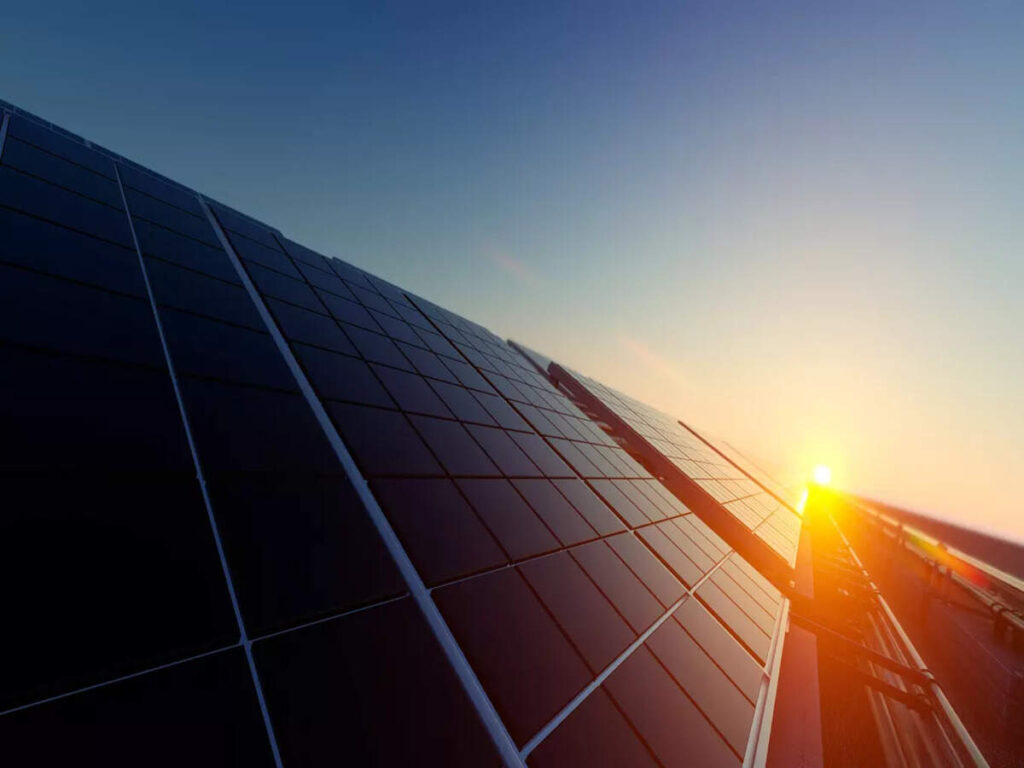NEW DELHI: The prohibitive tariffs imposed by the US on solar imports from Cambodia, Vietnam, Malaysia and Thailand may open new opportunities for Indian solar manufacturers to expand their businesses, according to industry players and experts. However, with Indian domestic manufacturing capacity just about to become sufficient to cater to the domestic market, there could be a shortfall in meeting the domestic demand if companies decide to cater to the US markets in hopes of higher margins, experts cautioned.
With the latest imposition of tariff on four southeast Asian countries, the US is expected to turn to the Indian market among other sources for a reliable and competitive alternative for its clean energy components.
“The evolving global trade dynamics in the solar sector have reshaped international supply chains and created new growth avenues for Indian solar manufacturers. The industry can expect a significant uptick in export volumes over the next few years, particularly to markets in North America, Europe, and MENA (Middle East and North Africa),” Prashant Mathur, CEO, Saatvik Green Energy said.
The US imposed as high as 3,521% of duties on solar imports from Cambodia, Vietnam, Malaysia and Thailand on Monday, saying they were found to be unfairly benefiting from government subsidies and exporting their products to the US at a lower rate than their cost of production, making American goods uncompetitive.
Experts believe that Indian modules will be a lot more competitive in the immediate term, against those from southeast Asia. “Unless a similar thing is imposed on india as well, we should expect Indian companies to do better,” an analyst said who did not wish to be identified. “However, Indian capacity is just about to become sufficient to meet domestic demand itself so counterbalancing could happen.”
Ashish Agarwal, Head of Solar & Storage at BluPine Energy noted that while these measures taken by the US may increase project costs in the US, they also create significant opportunities for Indian manufacturers. “With Chinese exports facing restrictions, Indian module manufacturers are well-placed to address the emerging gaps—particularly in the US market, where we see a lot of interest in partnering with Indian suppliers,” he said.
The Indian industry players also give credit to the government initiatives like introduction of the Approved List of Models and Manufacturers and Production Linked Incentives that encourage domestic capacity expansion, safeguarding them from potential geopolitical uncertainties such as this.
“This shift comes at a time when Indian manufacturers are better prepared than ever, thanks to robust government support through initiatives like the Production Linked Incentive (PLI) scheme and the Approved List of Models and Manufacturers (ALMM). These policies have encouraged capacity expansion, technological upgrades, and global compliance standards—critical for success in export markets. While exports have historically made up a modest share of revenues for many Indian solar manufacturers, the landscape is set to evolve rapidly,” Mathur said.
As per the government data, India’s solar module manufacturing capacity nearly doubled from 38 GW in March 2024 to 74 GW in March 2025, while solar PV cell manufacturing capacity tripled from 9 GW to 25 GW as of March.
The US has emerged as a key market for Indian solar PV products accounting for 97% of its overseas shipments in both FY23 and FY24. With the latest sanction of duties, Indian companies are expected to tap into the opportunity and further expand their business to the US.
The increasing demand for Indian PV products abroad and the attractive incentive structure under the Inflation Reduction Act (IRA) have also pushed many Indian manufacturers to establish manufacturing facilities overseas, particularly in the US. Some prominent players are Waaree Energies, Vikram Solar, Saatvik Energy, and Navitas Solar.
Waaree Energies, a major solar PV module manufacturer, in its earnings call had said that the company will decide how much should be manufactured in the US and how much in India based on how the tariffs ultimately settle into a rhythm. “That gives us a natural mode to control our primary operating metric,” company’s chief executive officer Amit Paithankar had said.
Earlier this month, the company had announced plans to double its US capacity to 3.2 gigawatt by establishing an additional 1.6 GW capacity solar module manufacturing unit at its Brookshire facility in Texas.
“Focusing on the US market can benefit the Indian PV manufacturing ecosystem. The exposure to the US market will enable Indian PV manufacturers to attain economies of scale, ultimately enhancing their product quality and competitiveness,” Vibhuti Garg, Director-South Asia, Institute for Energy Economics and Financial Analysis (IEEFA) had earlier said in a report.
Experts say that the scale of exports of Indian solar products to the US could dramatically change in the near term but some of it may come at the cost of domestic capacities.
Analysts also note that it is important for the country to balance the need of a growing export market with domestic availability given the government’s focus on increasing the share of renewable energy to 500 GW by 2030 and schemes like PM Suryaghar that mandate the use of domestic modules.
Source: The Financial Express

 International Agencies Cut India’s GDP Forecast To 6.2-6.7% In FY26
International Agencies Cut India’s GDP Forecast To 6.2-6.7% In FY26 